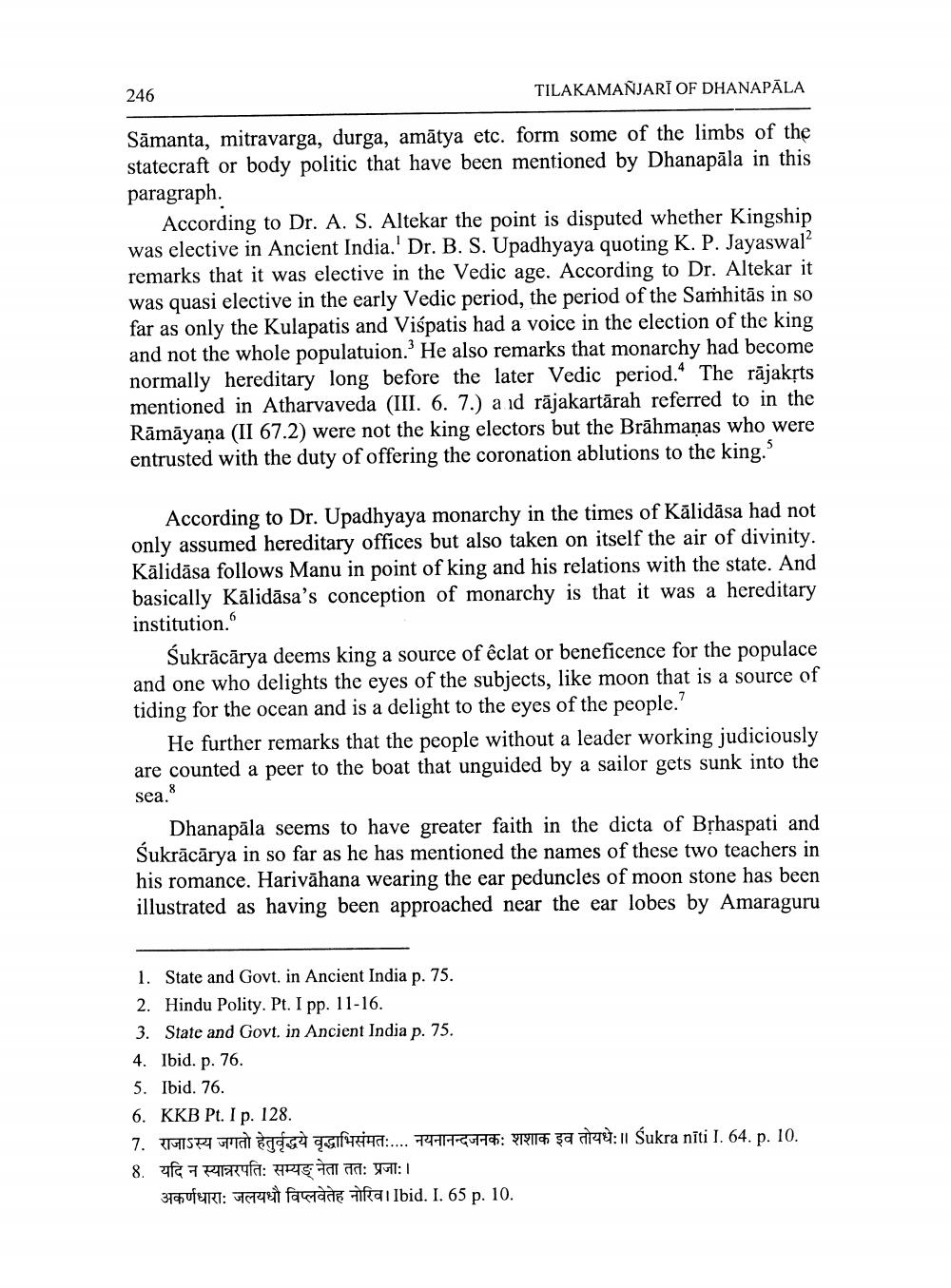________________
246
TILAKAMAÑJARĪ OF DHANAPALA
Sāmanta, mitravarga, durga, amātya etc. form some of the limbs of the statecraft or body politic that have been mentioned by Dhanapāla in this paragraph.
According to Dr. A. S. Altekar the point is disputed whether Kingship was elective in Ancient India.' Dr. B. S. Upadhyaya quoting K. P. Jayaswal? remarks that it was elective in the Vedic age. According to Dr. Altekar it was quasi elective in the early Vedic period, the period of the Saṁhitās in so far as only the Kulapatis and Vispatis had a voice in the election of the king and not the whole populatuion. He also remarks that monarchy had become normally hereditary long before the later Vedic period. The rājaksts mentioned in Atharvaveda (III. 6. 7.) a id rājakartārah referred to in the Rāmāyaṇa (II 67.2) were not the king electors but the Brāhmaṇas who were entrusted with the duty of offering the coronation ablutions to the king.
According to Dr. Upadhyaya monarchy in the times of Kālidāsa had not only assumed hereditary offices but also taken on itself the air of divinity. Kālidāsa follows Manu in point of king and his relations with the state. And basically Kālidāsa's conception of monarchy is that it was a hereditary institution.
Sukrācārya deems king a source of eclat or beneficence for the populace and one who delights the eyes of the subjects, like moon that is a source of tiding for the ocean and is a delight to the eyes of the people.
He further remarks that the people without a leader working judiciously are counted a peer to the boat that unguided by a sailor gets sunk into the
sea.
Dhanapāla seems to have greater faith in the dicta of Brhaspati and Sukrācārya in so far as he has mentioned the names of these two teachers in his romance. Harivāhana wearing the ear peduncles of moon stone has been illustrated as having been approached near the ear lobes by Amaraguru
1. State and Govt. in Ancient India p. 75. 2. Hindu Polity. Pt. I pp. 11-16. 3. State and Govt. in Ancient India p. 75. 4. Ibid. p. 76. 5. Ibid. 76. 6. KKB Pt. I p. 128. 7. TSR M a gh quang..... 7447-4479: 71% ga teret: il Sukra nīti I. 64. p. 10. 8. Of 7 PERYA: HRTE A a: WHI:
37 UERT: v eit facade Hai Ibid. I. 65 p. 10.




